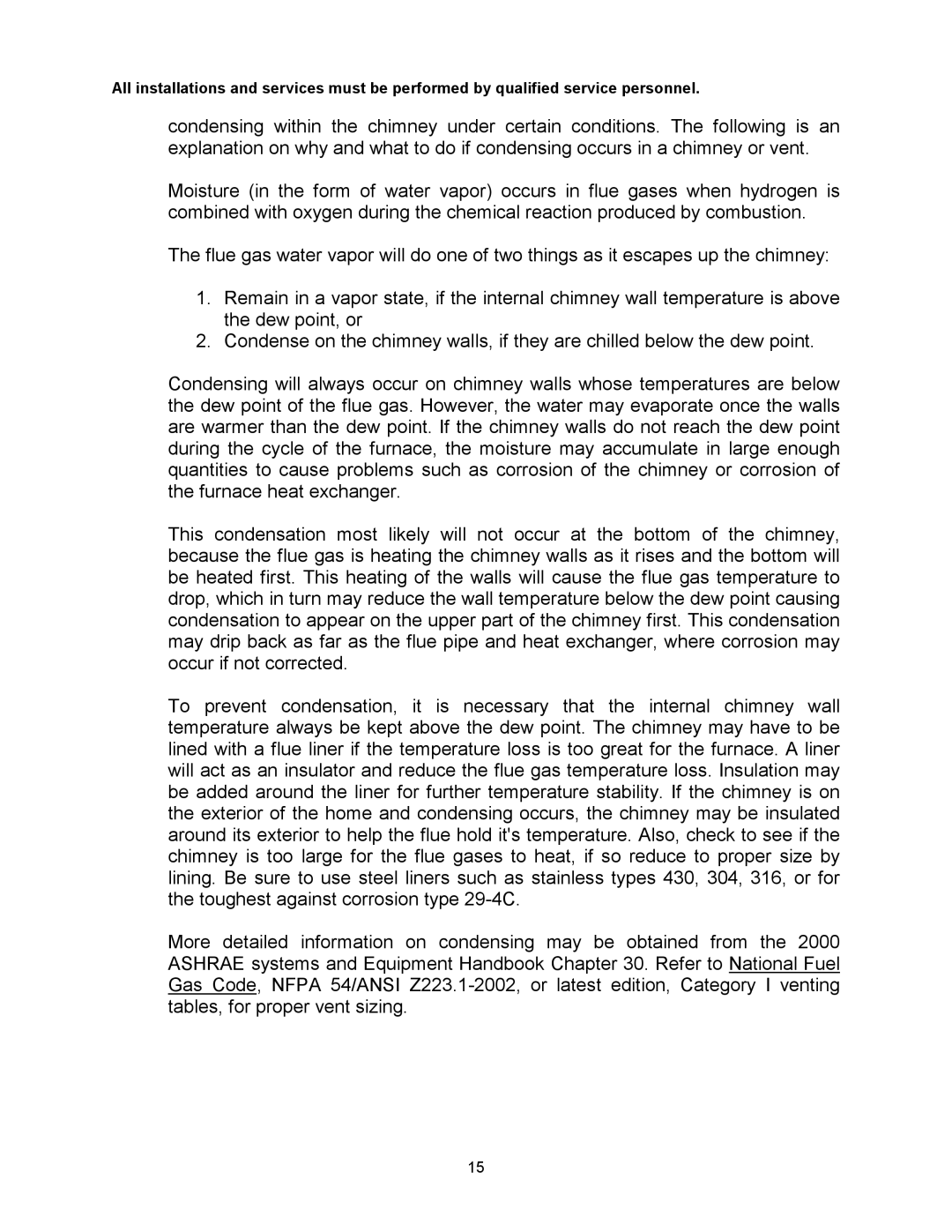All installations and services must be performed by qualified service personnel.
condensing within the chimney under certain conditions. The following is an explanation on why and what to do if condensing occurs in a chimney or vent.
Moisture (in the form of water vapor) occurs in flue gases when hydrogen is combined with oxygen during the chemical reaction produced by combustion.
The flue gas water vapor will do one of two things as it escapes up the chimney:
1.Remain in a vapor state, if the internal chimney wall temperature is above the dew point, or
2.Condense on the chimney walls, if they are chilled below the dew point.
Condensing will always occur on chimney walls whose temperatures are below the dew point of the flue gas. However, the water may evaporate once the walls are warmer than the dew point. If the chimney walls do not reach the dew point during the cycle of the furnace, the moisture may accumulate in large enough quantities to cause problems such as corrosion of the chimney or corrosion of the furnace heat exchanger.
This condensation most likely will not occur at the bottom of the chimney, because the flue gas is heating the chimney walls as it rises and the bottom will be heated first. This heating of the walls will cause the flue gas temperature to drop, which in turn may reduce the wall temperature below the dew point causing condensation to appear on the upper part of the chimney first. This condensation may drip back as far as the flue pipe and heat exchanger, where corrosion may occur if not corrected.
To prevent condensation, it is necessary that the internal chimney wall temperature always be kept above the dew point. The chimney may have to be lined with a flue liner if the temperature loss is too great for the furnace. A liner will act as an insulator and reduce the flue gas temperature loss. Insulation may be added around the liner for further temperature stability. If the chimney is on the exterior of the home and condensing occurs, the chimney may be insulated around its exterior to help the flue hold it's temperature. Also, check to see if the chimney is too large for the flue gases to heat, if so reduce to proper size by lining. Be sure to use steel liners such as stainless types 430, 304, 316, or for the toughest against corrosion type
More detailed information on condensing may be obtained from the 2000 ASHRAE systems and Equipment Handbook Chapter 30. Refer to National Fuel Gas Code, NFPA 54/ANSI
15
